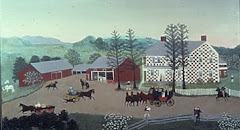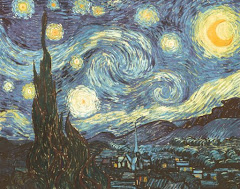The Praying Hands
The true story behind a well-known piece of art:
Back in the fifteenth century, in a tiny village near Nuremberg, lived a family with eighteen children. Eighteen! In order merely to keep food on the table for this mob, the father and head of the household, a goldsmith by profession, worked almost eighteen hours a day at his trade and any other paying chore he could find in the neighborhood. Despite their seemingly hopeless condition, two of Albrecht Durer the Elder's children had a dream. They both wanted to pursue their talent for art, but they knew full well that their father would never be financially able to send either of them to Nuremberg to study at the Academy.
After many long discussions at night in their crowded bed, the two boys finally worked out a pact. They would toss a coin. The loser would go down into the nearby mines and, with his earnings, support his brother while he attended the academy. Then, when that brother who won the toss completed his studies, in four years, he would support the other brother at the academy, either with sales of his artwork or, if necessary, also by laboring the mines.
They tossed a coin on a Sunday morning after church. Albrecht Durer won the toss and went off to Nuremberg. Albert went down into the dangerous mines and, for the next four years, financed his brother, whose work at the academy was almost an immediate sensation. Albrecht's etchings, his woodcuts, and his oils were far better than those of most of his professors, and by the time he graduated, he was beginning to earn considerable fees for his commissioned works.
When the young artist returned to his village, the Durer family held a festive dinner on their lawn to celebrate Albrecht's triumphant homecoming. After a long and memorable meal, punctuated with music and laughter, Albrecht rose from his honored position at the head of the table to drink a toast to his beloved brother for the years of sacrifice that had enabled Albrecht to fulfill his ambition. His closing words were, "And now, Albert, blessed brother of mine, now it is your turn. Now you can go to Nuremberg to pursue your dream, and I will take care of you."
All heads turned in eager expectation to the far end of the table where Albert sat, tears streaming down his pale face, shaking his lowered head from side to side while he sobbed and repeated, over and over, "No ...no ...no ...no."
Finally, Albert rose and wiped the tears from his cheeks. He glanced down the long table at the faces he loved, and then, holding his hands close to his right cheek, he said softly, "No, brother. I cannot go to Nuremberg. It is too late for me. Look... look what four years in the mines has done to my hands! The bones in every finger have been smashed at least once, and lately I have been suffering from arthritis so badly in my right hand that I cannot even hold a glass to return your toast, much less make delicate lines on parchment or canvas with a pen or a brush. No, brother ... for me it is too late."
More than 450 years have passed. By now, Albrecht Durer's hundreds of masterful portraits, pen and silver-point sketches, watercolors, charcoals, woodcuts, and copper engravings hang in every great museum, but the odds are great that you, like most people, are familiar with only one of Albrecht Durer's works. More than merely being familiar with it, you very well may have a reproduction hanging in your home or office.
One day, to pay homage to Albert for all that he had sacrificed, Albrecht Durer painstakingly drew his brother's abused hands with palms together and thin fingers stretched skyward. He called his powerful drawing simply "Hands," but the entire world almost immediately opened their hearts to his great masterpiece and renamed his tribute of love "The Praying Hands."
The next time you see a copy of that touching creation, take a second look. Let it be your reminder, if you still need one, that no one -no one ever makes it alone!
Quoted from: "A Better Way To Live" by Og Mandino, pp. 11- 13
Hands, by Albrecht Durer (1471-1528)
More facts about The Praying Hands
The most often reproduced and widely known of Albrecht Durer's works is the gray and white brush drawing on blue-grounded paper of the Hands of the Apostle, known generally as The Praying Hands by those who do not even know the German artist's name.
The actual drawing of Hands, sketched in 1508, was intended as a preliminary study for altarpiece commissioned by a wealthy Frankfort citizen, Jacob Heller. Nevertheless, the drawing is finished down to the last detail, because Durer planned to transpose it exactly in the final oil painting. For 13 months Durer worked on the final painting, determined to make it so sound and beautiful "that it will remain bright and fresh for five hundred years."
Unfortunately for his intentions, the central panel of the altarpiece, called The Assumption and Coronation of the Virgin, was sold a century later by the Dominicans to Duke Maximilian of Bavaria, and in 1729 it was destroyed by fire. Only a copy has survived, along with the preliminary sketches that Durer customarily fitted together for his final pictures almost like pieces of a jigsaw puzzle. Thus, we still have Hands today, which has been an enduring inspiration to millions, worldwide.
(above compiled from library reference books)
http://www.harvestnet.org/basics/prayinghandsstory.htm
Story and facts from this website....

This is Vincent VanGogh's Fourteen Sunflowers in a Vase. 1889, Museum of Art, Tokyo
The paint used is oil based. The colors are from the warm color palette of yellows, oranges and greens and browns. It reminds me of summer when fall is just around the corner. Hints of summer are lingering with the brightness of light while the onset of fall beckons the flowers to bend yielding more seed for next season.
"Oil is a versatile medium that can be blended on the painting surface. This creates a continuous scale of tones and hues. Darker shades are possible with this medium. It can be used directly from the tube (impasto-molding and shaping to create 3-D surfaces) or thinned with turpentine (to become more transparent)."(Text, 152) It appears that impasto techniques may very well have been employed here.
This representational painting appears to sit on a horizontal surface with short, expressive lines forming the flowers themselves. Long swim- like curving lines creates the flow of each entire flower. From stem to individual petals are lines, which curve in almost every direction. These sunflowers are not behaving as outdoor sunflowers do which are still in the ground. They are not following the source of outdoor sunlight throughout the day.
























No comments:
Post a Comment